1. Protocol design
1.1. Effect of analytical grids
2. Map Organization
2.1. Empirical data in black
2.2. Questions in red
2.3. Proposed experiments in blue
2.4. How to contribute content
2.5. How To Use Map
3. Questions
3.1. Role that long-term meditation plays in
3.1.1. psychological remodeling
3.1.2. physiological remodeling
3.2. What is responsible for widening perceptual basin and data integration as RV session progresses?
3.3. What determines direction of information flow/error propagation in group telepathy/ group RV? Dominance of one participant is due to his/her own investment in the target or authority relationship to rest of the group?
3.4. Is PK due to subject or experimenter expectation?
3.4.1. In multi-subject experiments, where natural psi ability and beliefs normally distributed
3.4.1.1. see Brian Millar's "Forensic Parapsychology" experiment proposal in JNL Dec. 2012 issue
3.4.2. In gifted/trained subject(s) scenario
3.5. Is there a limit to psi effect size if motivation, belief and training maximally aligned among subjects and experimenter?
3.6. What determines strength/effectiveness of intent in opposing PK vectors? Who wins and how?
3.7. Is there a temporal limit or temporal effect decline for PK?
3.8. How does feedback impact the RV data?
3.9. How does the operator entangle with the target?
3.10. How does the operator go to the wrong target ("displacement")?
3.11. Why is PK dependent on randomness in target system but independent of target complexity or operator understanding of internal mechanism ("goal-oriented psi")?
4. Proposed Experiments (see below). Detailed description available on the M3P website under Experimental Proposal Registry.
5. Mind-Machine Interactions
5.1. Basic Experiment
5.2. Mind-Machine / Field Interactions bibliography
5.3. Jeffers/PEAR/Radin's Psi Version of Double Slit Experiment
5.4. Retro-PK experiments
5.5. Increased effect with bonded pairs
5.6. Specific operator signatures (PEAR data)
5.7. Decline effect with loss of interest/motivation
5.8. Events of collective significance create increased coherence in REG data network (field-REG, GCP)
5.9. Carryover Effect, Imprinting equipment
5.10. Intent/Effect time lag
6. Remote Perception (also see M3P Remote Viewing Map for expanded schema and bibliography)
6.1. Anticipatory Responses
6.2. Aligned intent of participants defines/identifies target
6.3. Error-correcting feature: aligned intent of participants overrides formal target designation errors (per McMoneagle)
6.4. Errors can propagate among group participants: what determines information flow vector? See Warcollier. Does one participant dominate? Does tasker's expectation percolate into data?
6.5. Data affinity is viewer specific (viewer reliability higher in specific modalities) per Lynn Buchanan
6.6. Effect of feedback on data
6.6.1. Courtney Brown's "analyst effect"
6.6.2. Courtney Brown "proper closing" requirement
6.7. Psychological barriers
6.7.1. Belief in psi
6.7.2. Fear of psi
6.7.3. Fear of failure
6.7.4. Motivation
6.8. Physiological barriers
6.8.1. Ability to achieve and sustain concentration
6.9. Displacement and viewer affinity
6.10. Information bleed-through
6.11. Target Masking and Entrainment
6.12. Viewer "fingerprinting" of the target
6.13. Non-human living creatures shown capable of remote perception See Backster studies
6.14. 100th monkey effect: spread of memes and behavior without direct contact. See Sheldrake studies
6.15. Entrainment Lag Time
6.16. Environmental Factors
6.17. Dream Telepathy
7. Biophysics
7.1. Role of biophotons in genetic regulatory mechanisms (see Popp, Mae Wan Ho, Gariaev)
7.2. Remote intent effects on in vitro and other biological targets targets
7.3. Biophoton/Electromagnetic signatures at healer and target
7.4. Bigu: "remote metabolism"
7.5. Direct Mental Interactions with Living Systems DMILS
7.6. Physiological correlates of remote interactions: where is the mind-body interface?
7.7. Role of meditation in mind-matter effects: physiological remodeling?
7.8. Role of endogenous electromagnetic field (see Becker)
7.9. Role of imagery in healing
7.10. Placebo effects
7.11. Sender-receiver EEG synchronization
8. Bibliographical Sources and Abbreviations
9. Physics Modeling
9.1. (retro)Causality
9.2. Observational Theories
9.3. Decision Augmentation Theory
9.4. Topological Geometrodynamics
9.5. Quantum Mechanics of Consciousness
9.6. Quantum Physics Meets Biology
10. Applications
10.1. RV
10.1.1. Forensics
10.1.2. Medical Diagnostic Tools
10.1.3. Basic Science Applications
10.1.3.1. Foundations of Physics
10.1.3.2. Biology
10.1.4. Intelligence
10.1.5. Associative RV
10.1.6. Masking and Entrainment Approach for Abstract Targets
11. PK-RV Intersections
12. Other Bibliographies by Map Author
12.1. Patrizio Tressoldi
13. Lines of Research
13.1. Quantum Effects in Biology
13.2. Cognitive/Linguistic/Topological Approaches to Remote Viewing
13.3. Observer/Experimenter Effects
13.3.1. Is Psi Subject- or Experimenter driven?
13.3.2. Effect of Analyst on RV data
13.3.3. Retro-PK
